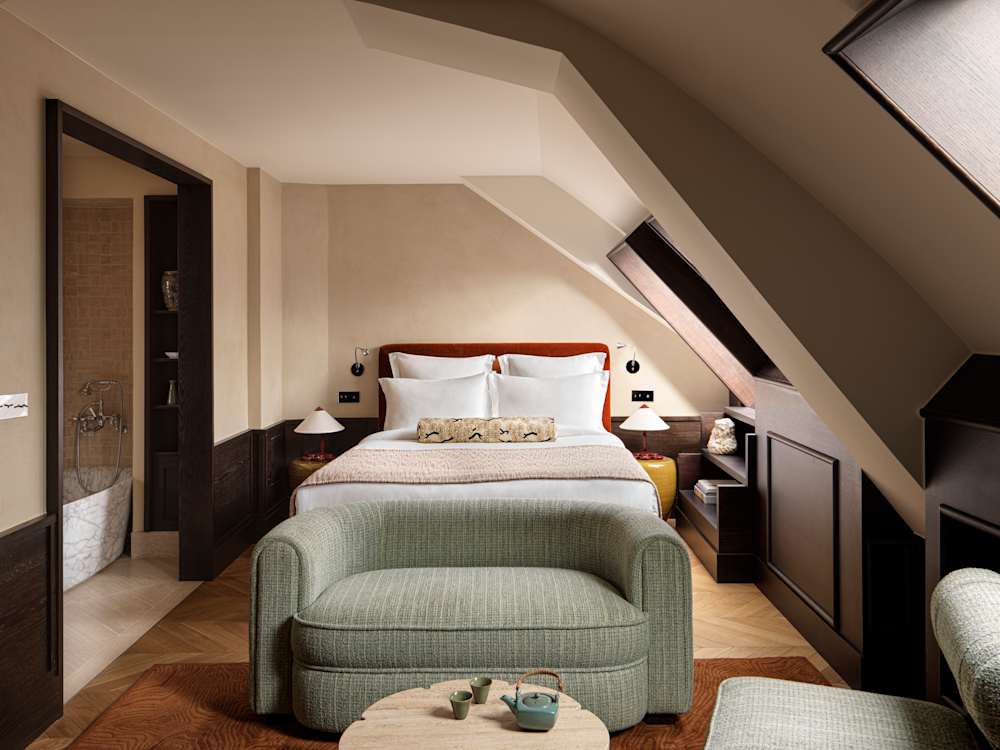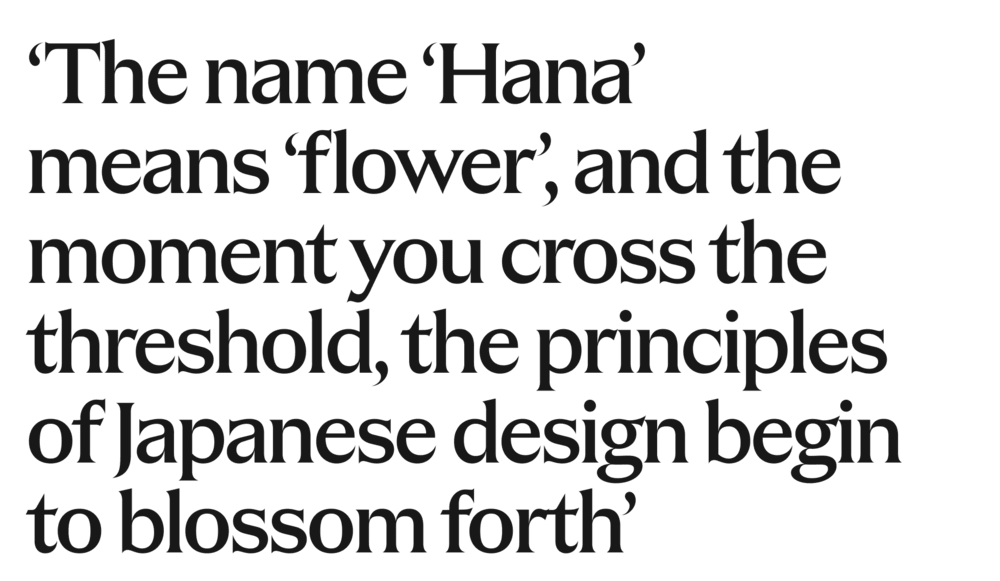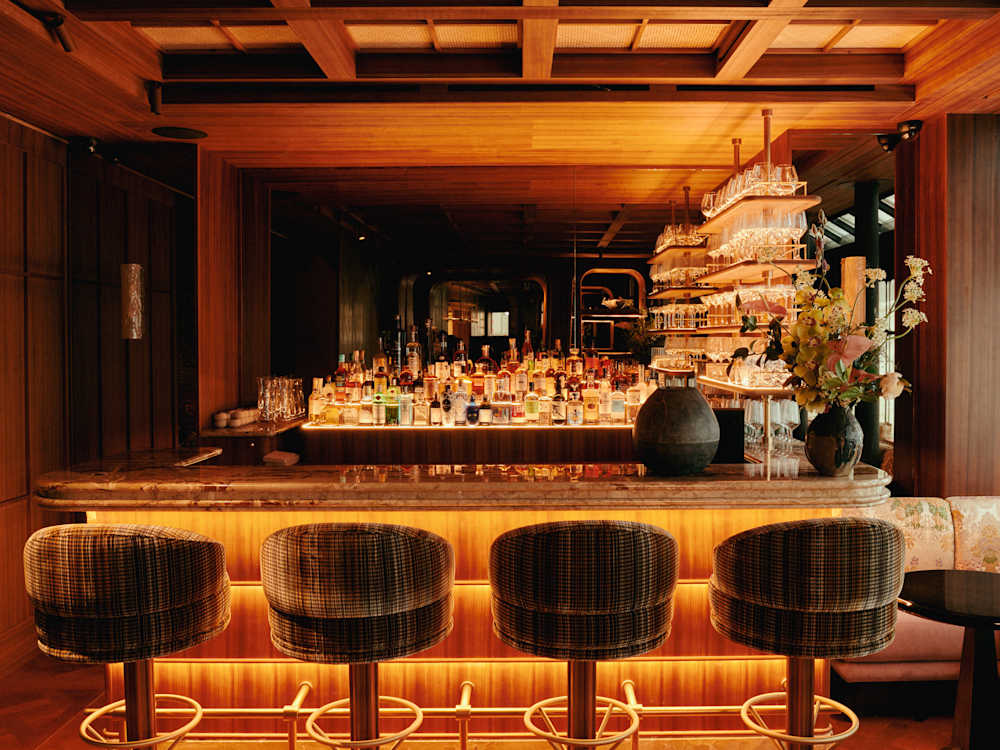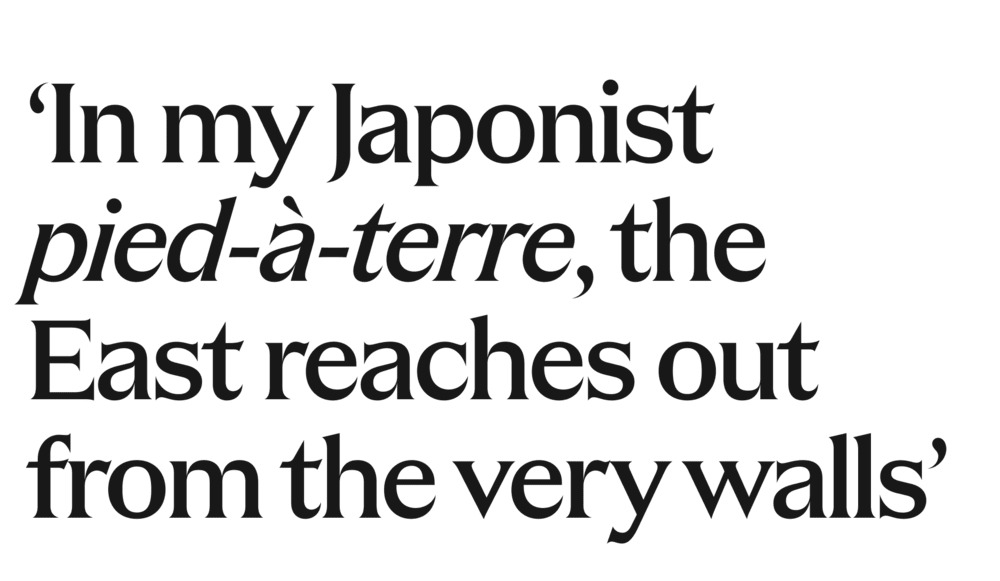On 8 July 1853, an American commodore named Matthew C. Perry sailed into Edo Bay with 500 men, 73 cannons and one sternly-worded letter. The world was never quite the same again. For this moment would come to be known as the ‘Opening of Japan’, the first time a trade treaty was struck between Westerners and the Japanese for 220 years. Unable to rebuff Perry’s gunboat diplomacy, the shogunate signed, bringing Japan’s isolationist policy of sakoku (‘chained nation’) to an end. The floodgates were about to open, clearing the way for a great wave of cultural exchange that would alter Western art and aesthetics forever.

172 years later, I’ve come to Paris to seek out the legacy of this cultural revolution. Sailing up the Rue du 4 Septembre in the dead-central Deuxième, I close in on my prize: the district known as Little Tokyo, centred around the Rue Sainte-Anne. My port? The Hôtel Hana, a contemporary Parisian stay that marries the imperial style of Haussmann — Paris’ principle city-shaper — with the softer, wabi-sabi principles you’d find in Japanese machiya (townhouses) or ryokans (traditional inns).
But why Paris in particular? After Perry’s expedition, Japanese objects and ideas poured into Europe, sparking a craze that came to be known as Japonisme — which is apt, because it was the French that carried the obsession to fever pitch. At the 1878 Paris Exposition Universelle, there was such a rush to buy Japonist items that the fair sold out in the first few weeks (bear in mind it had a six-month runtime). In Montmartre, Claude Monet and Edgar Degas were busy modifying their Impressionist styles based on Japanese aesthetics, while Vincent van Gogh was collecting ukiyo-e woodblock prints and displaying them at the Café du Tambourin. The hook was well and truly in.

In the meantime, my own immersion has begun. I’ve arrived, having spied a handsome front door with brass handles shaped like bamboo stems. The name ‘Hana’ means ‘flower’, and the moment you cross the threshold, the principles of Japanese design begin to blossom forth. French designer Laura Gonzalez is behind the interiors here and it’s her use of wood that strikes you first: it covers the walls, the ceiling and the curving architraves connecting the lobby, bar and restaurant. It’s all beautifully shaped but there’s no paint, polish or decorative engraving on show; instead, the grain does the talking. This celebration of natural materials still feels modern today but it was a revelation in 19th-century Europe.
Chinese art had made its way to France much earlier, but its lavish ornamentation and complex patterns weren’t all that far removed from contemporary styles like Rococo or Baroque. Wabi-sabi, the Japanese embrace of simplicity and imperfection, was something new. As if to drive this home, the tables in restaurant Hanabi are topped with a thick layer of raku ceramic, glazed in a mossy green. The seams joining the pottery are there for all to see, as are patinas of cracks and tiny air bubbles that ensure no two are alike. This is all intentional of course, as are the painterly splashes on the restaurant’s metal murals, reminiscent of the calligraphy strokes used in kanji. But there’s a laissez-faire attitude that governs the whole.
Upstairs in my Japonist pied-à-terre, the East reaches out from the very walls, partitioned with slats of wood and clad in tightly-woven straw. This papery surface is lit by lamps masquerading as half-moons, an ode to the lanterns found on the streets of Kyoto. On a coffee table shaped like a cherry blossom is a plate of cakes — one green, one black — which turn out to be flavoured with matcha and sesame seed, rendered in gloriously dense pâtisserie. This is my first taste of Hanabi’s Japanese-inspired cuisine and succeeds in carrying my thoughts straight to the Land of the Rising Sun, as if called by the melody of a shamisen lute. Visions of sake and sizzling wagyu fill the mind. Alas, my dinner reservation is not for another two hours, so I settle for a yuzu sencha tea and some buckwheat chocolate from the minibar, then head out into the afternoon sun.

I’ll admit I’d never been to Little Tokyo before this trip. And I’m glad, because this happy haunt became my home for much of the next 24 hours. It’s a fine little quartier to stroll around, full of stylishly dressed Japanese and Koreans. It’s where you’ll find the city’s best ramen spots (try Kodawari Tsukiji, famed for its sea-bream broths and styled like an eatery you’d find down a Tokyo alleyway); sushi restaurants (Sushi B, with just eight seats at the counter, is a favourite); as well as Asian supermarkets, ceramic stores and boutiques. There are endless ways to spoil your appetite, including delectable miso fondants by Emiko Sano, chocolatier at Le Trois Chocolats. But I cannot stand up Hanabi, so I fall on my sword, sticking with just a taster.
Back at the hotel, the stage is set. First, a Hatozaki whisky cocktail, muddled with a blend of Japanese spices, homemade vanilla syrup and a smoky infusion made with rice and the wood of a cherry tree. It’s the sort of drink you’d never know to ask for but turns out to be precisely what you wanted. My only complaint is that it’s drained all too soon — so I seek solace in the fact that fleeting pleasures were a core element of ukiyo (the ‘floating world’), an Edo-era philosophy that fascinated French artists like Pierre-Auguste Renoir, who sought to reinterpret its embrace of impermanence and transient moments.
Resolved to live in the now, I turn to my starter, a whole courgette flower, flash-fried tempura style and sprayed with a fine mist of vinegar, sake and miso. Then comes the yellowtail sashimi, arranged in little pools of oil that bring new flavours with each bite: herb, spice, citrus… The grand finale is a whole fish grilled over Japanese binchō-tan — reputedly the purest charcoal on earth — and served with a kumquat salad and citrussy yuzushu mayo. It is excellent, every dish, and composed with as much artistry as a print by Hokusai. By the end, all that’s left to do is float upstairs to bed.

The next morning, I go hunting for the source of the Japonist infatuation. You’ll find answers at the Musée Cernuschi, a grand mansion on the edge of the Parc Monceau. After taking the mother of all gap-years, wealthy politician Henri Cernuschi had amassed one of the largest private collections of Asian art in Europe, sending home 900 crates filled with monumental bronzes, ceramics, lacquered wood, prints and paintings. Then there’s the Musée Guimet, where you begin on the ground floor among the most ancient Asian relics, working your way up until you get to the final piece in the collector’s puzzle: Japan. Between the two, the effect of Japanese culture on European sensibilities starts to become clear. Art was not just painting and sculpture, it could be a teapot, a bowl or a woodblock print. Perspective and balance were vital, understatement was beautiful, and transience was something to be celebrated, not feared. And that is precisely what Hôtel Hana is all about: embracing the beauty in all things and savouring those fleeting moments.
Plot your own Japonist trail with our full Paris collection or head to the source in Japan



